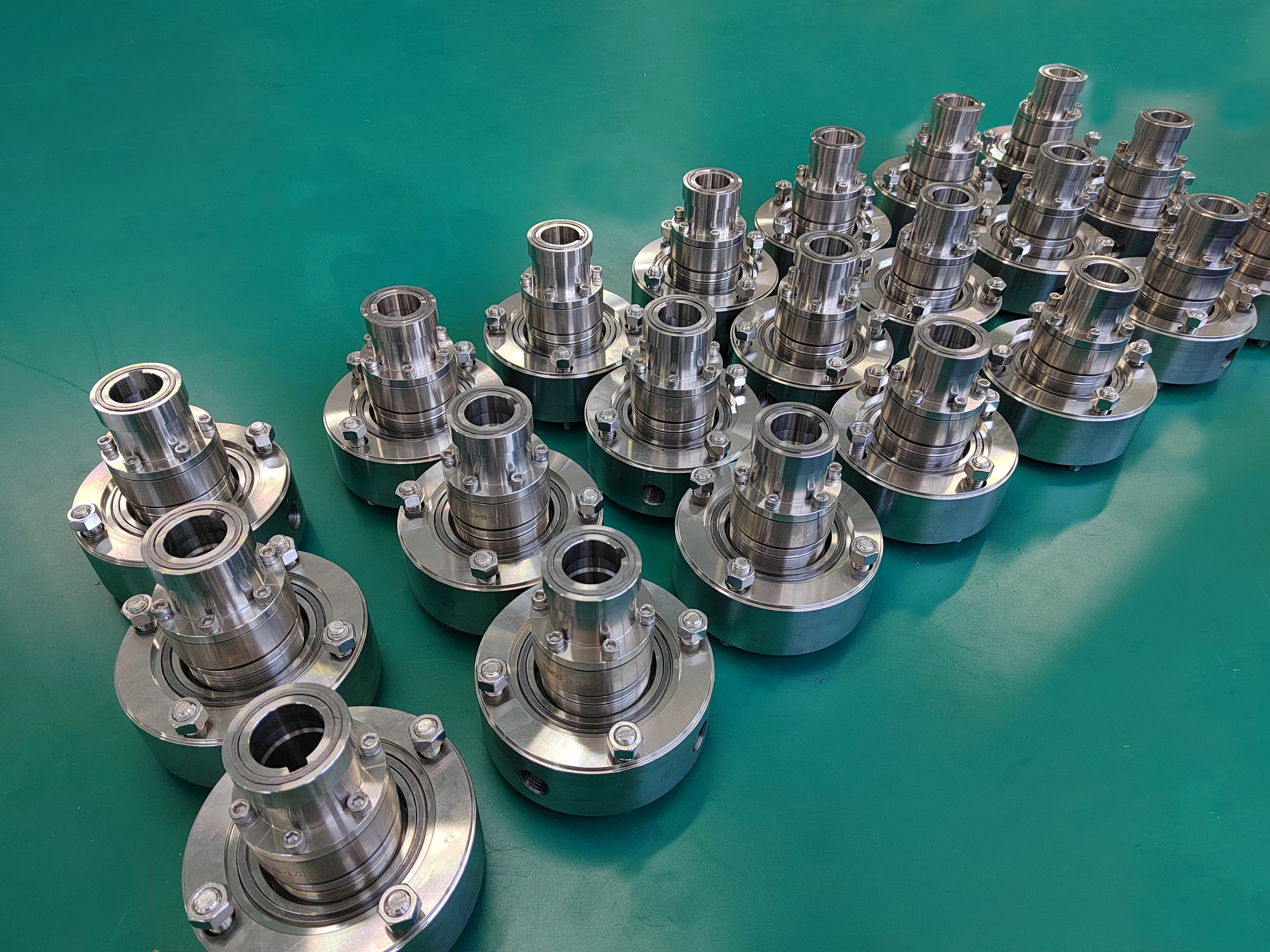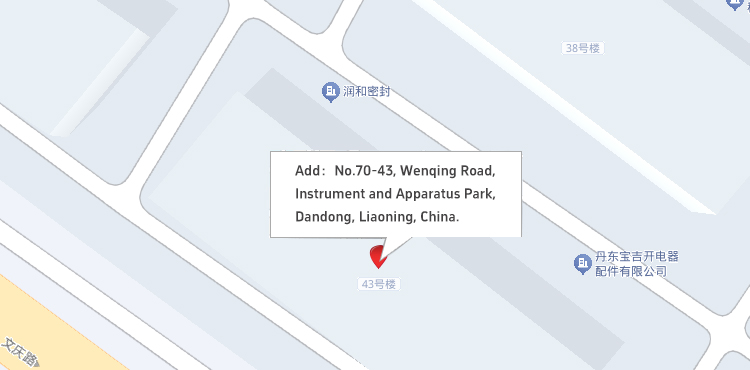
Mechanical seals are key components used to prevent fluid leakage in rotating machinery (such as pumps and compressors). They can be divided into single mechanical seals and double mechanical seals according to their structure. The design principles, application scenarios and performance characteristics of the two are significantly different. The following is a detailed comparison:
1. Structure and working principle
Structure: It consists of a set of seal faces (dynamic ring + stationary ring), elastic elements (springs), auxiliary seal rings (O-rings, etc.), installed between the rotating shaft and the stationary housing.
Principle:
- The dynamic ring rotates with the shaft, and the stationary ring is fixed on the seal chamber. The two fit together to form a seal face, which is kept in close contact by spring force.
- An extremely thin liquid film (or air film) is formed between the seal faces to prevent the leakage of the internal medium. At the same time, the liquid film plays a role in lubrication and cooling.
Features: simple structure, easy installation, but only rely on a single sealing surface to achieve sealing.
(2) Double Mechanical Seal
Structure: It consists of two sets of seal faces (inner dynamic ring + stationary ring, outer dynamic ring + stationary ring). The two sets of sealing faces are arranged in parallel to form an isolation cavity in the middle.
Principle:
- The inner sealing surface (primary seal) prevents the leakage of process media (such as liquid, gas);
- The outer sealing surface (secondary seal) prevents the leakage of isolation fluid (or buffer), and the isolation chamber needs to introduce external fluid (such as clean water, lubricating oil).
- The isolation fluid pressure is usually higher than the process medium pressure, forming a "barrier fluid" to further block the leakage path of the medium.
Features: Double sealing surface + isolation chamber design, higher sealing reliability, but complex structure and high cost.
2. Differences and contrasts
|
Items |
Single Mechanical Seals |
Double Mechanical Seals |
|
Number of sealing surfaces |
1 set (dynamic ring + stationary ring) |
2 sets(Inner + outer sealing surface) |
|
Isolation chamber / auxiliary fluid |
None |
Yes, isolation fluid/buffer needs to be introduced. |
|
Applicable media |
- Clean, particle-free, less corrosive media - Normal pressure or low pressure scenarios |
- High-risk media (such as toxic, flammable, volatile, highly corrosive) - Harsh working conditions with high pressure, high temperature or particles |
|
Leakage risk |
Single sealing surface, high risk of leakage (media leaks directly) |
Double seal + isolation fluid barrier, extremely low risk of leakage (the medium first leaks into the isolation chamber and is then blocked by the isolation fluid) |
|
Cooling and lubrication |
Relying on the lubrication of the medium itself, if the medium is easy to vaporize or coke, it may fail |
The isolation fluid can actively cool and lubricate the sealing surface, and is suitable for high temperature and high viscosity media. |
|
Cost and maintenance |
Simple structure, low cost and easy maintenance |
The structure is complex and requires a supporting isolation fluid system (such as pumps and storage tanks), which is costly and difficult to maintain. |
|
Typical application scenarios |
Clean water pumps, ordinary oil pumps, low-pressure chemical processes |
High temperature oil pumps in refineries, liquefied gas compressors, acid and alkali medium delivery pumps, and high-risk fluid equipment in the nuclear industry |
3. Analysis of key application scenarios
(1) Application scenarios of single mechanical seals
Medium properties: clean and free of impurities (such as water, oil, alcohol); non-high-risk (non-toxic, non-flammable, non-corrosive).
Working conditions: pressure ≤ 1.5 MPa, temperature ≤ 100℃; medium rotation speed (such as ordinary centrifugal pump).
Examples:
Household tap water pipeline pump;
Juice delivery pump in the food and beverage industry;
Refrigerated water pump in air conditioning system.
(2) Typical scenarios for double mechanical seals
Handling of high-risk media: flammable liquids such as liquefied natural gas (LNG) and gasoline; highly corrosive media such as sulfuric acid and caustic soda; toxic gases such as chlorine and ammonia.
Severe working conditions: high pressure (such as oil field water injection pumps, pressure > 10 MPa); high temperature (such as refinery vacuum tower bottom pumps, temperature > 300°C); containing solid particles (such as slurry pumps, sewage treatment pumps).
Examples: nuclear power plant reactor coolant pumps (to prevent leakage of radioactive media); petrochemical industry hydrocracking unit pumps (high pressure, high temperature, hydrogen media); coal slurry delivery pumps in coal chemical industry (containing particles, requiring isolation fluid to flush particles).
4. Maintenance and selection suggestions
(1) Maintenance points
Single Mechanical Seal:
- Regularly check the seal face for wear (such as cracks and scratches);
- Avoid dry operation (the seal face is easily burned when the medium is insufficient).
Double Mechanical Seal:
- Focus on monitoring the isolation fluid system (pressure, flow, temperature);
- Regularly replace the isolation fluid (to prevent contamination or deterioration);
- Check whether there are signs of medium leakage in the isolation chamber (such as abnormal color or odor).
(2) Selection principles
Single Mechanical Seal is preferred: if the medium and working conditions meet the clean and low-risk conditions to reduce costs and maintenance complexity.
Double Mechanical Seal must be selected: when the medium involves safety, environmental protection or process stability (such as leakage may cause explosions and pollute the environment), or the working conditions exceed the limits of single mechanical seal (high pressure, high temperature, particles).
Intermediate solution: If the medium contains a small amount of particles but does not reach a high-risk level, a single mechanical seal with flushing can be used (clean the sealing surface through external flushing fluid to extend the service life).
Keywords: cartridge mechanical seal, cartridge type mechanical seal, double cartridge mechanical seal, double mechanical seal, single mechanical seal, single cartridge mechanical seal, single spring mechanical seal.




 export@rhseal.com
export@rhseal.com





